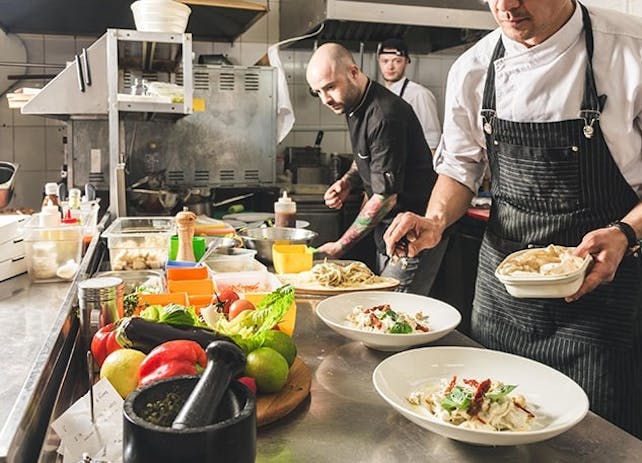Depending on the place, shared kitchens can range from small spaces of less than 1,000 sq. ft. to massive communal food enterprises of more than 30,000 sq. ft. You’ll find an equally diverse range of equipment in these spaces, too, so it pays to do your homework. In larger cities, you may have dozens of shared kitchens to choose from, usually ensuring you’ll find exactly what you need. Smaller markets, not surprisingly, have fewer shared kitchen facilities to choose from, so you may have to adapt or find workarounds for some of your needs.
Layouts vary, too. Some shared kitchens have a large communal prep area and one or more cooking stations with different types of equipment, such as for baking. Smaller shared spaces may have only one kitchen setup, so you might have to jockey for time slots in order to use the area or space you need. Common shared commissary kitchen layouts include assembly line, island cooking suites, zone-style layout, galley kitchen, or open kitchen. If you’re more comfortable with one over another, try to find a shared kitchen with the layout you prefer, and that meets your other needs, as well.

Choosing the Right Kitchen for You
When evaluating shared kitchens, first think about what the needs of your customers are, and what you’ll need to cater for a particular event. Make a list of how much and what type of storage space you require, what equipment you’ll need, how many staffers you’ll need to prep and cook to determine how many prep/cook stations you’ll need, and what hours will work best for your schedule.
What does it cost to use a shared kitchen space?
Shared kitchens typically charge for use by the hour and by the linear foot for storage, whether refrigerated or dry. Some have monthly membership fees; some have minimum hourly fees with a sliding scale that lowers the hourly cost the more hours you use. Still, others will let you rent space by the month that is all yours so no one else can share it.